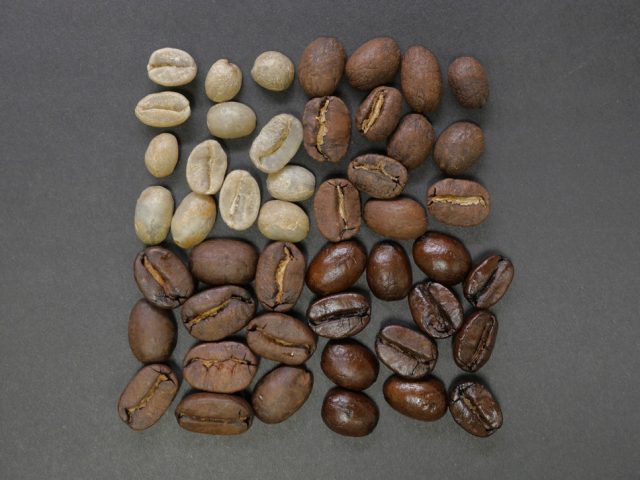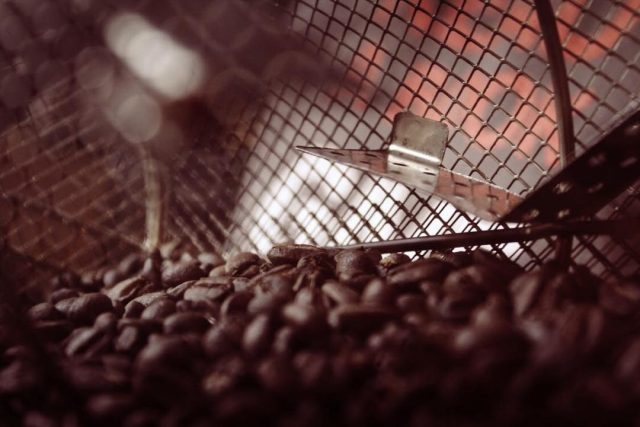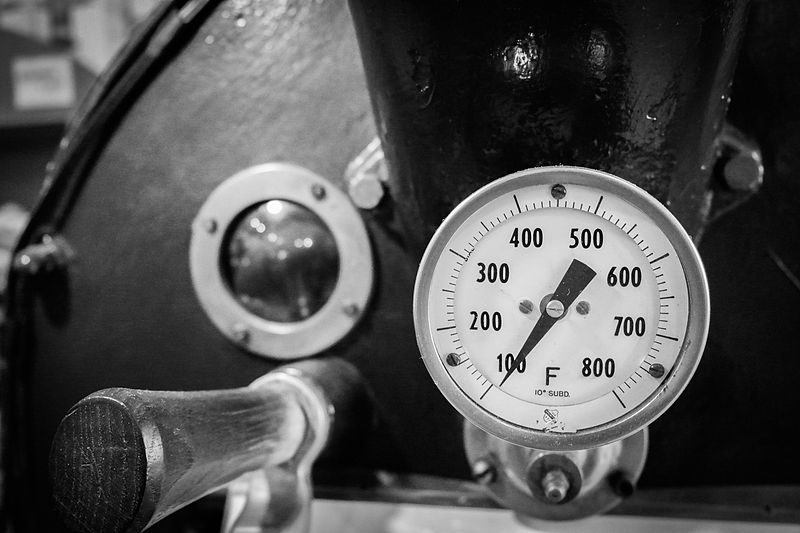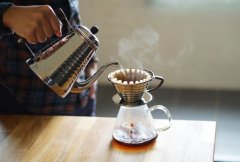[original] the lighter the roasting of coffee beans, the more sour they drink?
For professional baristas, please follow the coffee workshop (Wechat official account cafe_style)
On weekdays, you can get in touch with all kinds of guests at the bar, a considerable number of whom are not used to the sour taste of coffee, and usually sour coffee is shallow roasted coffee. it is also true that some of the sour taste of shallower roasted coffee is unacceptable. Therefore, guests naturally leave the impression that the shallower the coffee is roasted, the more sour the coffee will be.
So is this really the case?

It depends on the source of the sour taste in the coffee and how these acids change during the baking process.
The sour substances in raw coffee beans are malic acid, citric acid, tartaric acid, chlorogenic acid, phosphoric acid and so on.
During the roasting process of coffee, the sugars and organic acids in beans will begin to be degraded by heat or decomposed into formic acid, acetic acid, lactic acid, fumaric acid, Corninic acid and other acids, but these acids will continue to degrade or volatilize with the deepening of baking degree.
In the baking process, the most dramatic changes in acid quality and acid concentration are the stages of development after the explosion begins. In this way, the acid in coffee reaches its highest value at some point after an explosion and then decreases due to the thermal decomposition or volatilization of the acid.

In fact, at the beginning of an explosion, a large number of organic acids such as formic acid and acetic acid in coffee will be formed, reaching the maximum value at the end of an explosion, and then begin to decrease. On the other hand, organic acids such as citric acid and malic acid will be slowly decomposed with the explosion. Citric acid and malic acid are acids that taste bright and comfortable, while acetic acid and formic acid are volatile, taste sour, smell sour and irritate at high concentrations.
Moreover, after the explosion, the sucrose in the coffee will be slowly consumed in the reaction. So, in fact, coffee tastes the most sour in the medium and shallow roasting stage, while in the very shallow and shallow roasting, because the coffee beans retain more sucrose and the total amount of organic acid is not so large, in fact, there is a very natural sweetness in the soft sour taste, and some raw beans that already contain high sugar content in raw beans will even have a strong sweet feeling if roasted to this stage.

Baked a washed iron pickup truck from Papua New Guinea. Divided into two baking, I tried to make the yellowing point before the explosion and the explosion point are the same, only changed the development time after the explosion.
The first bean is 190.5 degrees at 1:20 seconds after an explosion (a dense middle part of an explosion).
The second one is 191.8 degrees at 1:40 seconds after an explosion (an explosion).
The cup test shows that:
The first one: the taste is soft and sour, and then the sweetness will converge soon. However, the aroma will be relatively simple, there will be a little similar to ginseng flavor.
Second: the entrance acidity will be brighter, the acidity will be higher, the sweetness will appear later, the aroma complexity will be higher, and there will be fruit-like aroma.

Therefore, in fact, it is not that the shallower the roasting degree, the more sour coffee must be, which is related to the complex changes and combinations of all kinds of flavor substances in coffee roasting. But there is no doubt that shallow roasting will give the coffee beans a green taste.
Important Notice :
前街咖啡 FrontStreet Coffee has moved to new addredd:
FrontStreet Coffee Address: 315,Donghua East Road,GuangZhou
Tel:020 38364473
- Prev

Know the evaluation items and score grades of Coffee Review coffee evaluation / coffee scoring system
Professional baristas exchange please follow the coffee workshop (Wechat official account cafe_style) [Coffee Review introduction] Coffee Review literally translates the meaning of coffee evaluation. It was founded in 1997 by Kenneth Davids, who won the American Fine Coffee Association Coffee Literature Award. It has been more than ten years since it was founded in 1997. Coffee Revi
- Next

Relationship between water temperature of hand-brewed coffee and extraction tools and freshness of coffee beans
Communication of professional baristas Please pay attention to the relationship between water temperature and extraction tools in the coffee workshop (Wechat official account cafe_style). The temperature of brewing coffee determines the aroma of a cup of coffee, so the quality of the water is as important as the quality of the beans. When brewing coffee, the hot water temperature also varies depending on the extraction tool used. Brew coffee by dripping filter paper to make a simple statement.
Related
- Beginners will see the "Coffee pull flower" guide!
- What is the difference between ice blog purified milk and ordinary milk coffee?
- Why is the Philippines the largest producer of crops in Liberia?
- For coffee extraction, should the fine powder be retained?
- How does extracted espresso fill pressed powder? How much strength does it take to press the powder?
- How to make jasmine cold extract coffee? Is the jasmine + latte good?
- Will this little toy really make the coffee taste better? How does Lily Drip affect coffee extraction?
- Will the action of slapping the filter cup also affect coffee extraction?
- What's the difference between powder-to-water ratio and powder-to-liquid ratio?
- What is the Ethiopian local species? What does it have to do with Heirloom native species?

